🖼️ Picture this:
You click on a link in an ad for a pair of running shoes.
Instead of opening the store’s homepage, it takes you straight to the exact product page inside the mobile app.
That smooth jump is powered by deep linking, and it’s one of the smartest ways brands today are reducing friction for their users while boosting conversions.
Deep links act like digital shortcuts.
They don’t just open apps; they take people to precise content inside apps.
From shopping carts on Amazon to playlists on Spotify, deep links are shaping how users interact with brands across platforms.
In this guide, we’ll break down how deep linking works, why it matters for businesses, and where Linko comes in to make the process effortless.
What is a Deep Link and How Does It Work
A deep link is a hyperlink that sends users directly into a specific page or function inside a mobile app instead of just opening the app’s homepage.
Think of it as skipping the lobby and going straight to the room you want.
Here’s how it works in simple terms:
- User clicks a link from a website, social ad, or email.
- The system checks whether the app is installed on their device.
- If the app exists, the deep link opens the exact page or feature inside it.
- If the app is missing, advanced versions redirect the user to the right app store (App Store or Google Play) for download, then back to the intended page.
Deep linking bridges the gap between mobile web and apps, making user journeys faster and more relevant.
Types of Deep Linking: Basic, Deferred, and Universal
Not all deep links are created equal. Businesses use different types based on their needs:
Basic Deep Links:
- These links only work if the app is already installed. If it’s not, users end up at an error page or nowhere useful.
Deferred Deep Links:
- These solve the biggest problem of basic deep links. If a user doesn’t have the app, deferred deep links send them to the app store to install it. Once installed, they are guided back to the intended page or product inside the app.
Universal Deep Links (iOS) and App Links (Android):
- These are the modern, flexible versions. They work across platforms and ensure users either land inside the app or on the web fallback page if the app isn’t present.
| Type of Deep Linking | Works Without App Installed | Redirects to Store | Brings User Back to Content |
|---|---|---|---|
| Basic Deep Links | ❌ No | ❌ No | ❌ No |
| Deferred Deep Links | ✅ Yes | ✅ Yes | ✅ Yes |
| Universal/App Links | ✅ Yes | ✅ Yes | ✅ Yes |
Why Deep Links Improve User Experience
A smooth experience is everything in digital marketing.
Deep links cut down steps, reduce drop-offs, and make sure users don’t waste time hunting for content.
Some clear benefits to the user journey include:
- No extra searching – they land exactly where the brand wants them.
- Seamless cross-channel navigation – ads, social media, and email campaigns feel consistent.
- Better trust and engagement – fewer interruptions build confidence.
“The fewer steps a user takes to reach what they want, the higher the chance they’ll stick around or make a purchase.”
This isn’t just about convenience; it’s a commercial advantage.
Brands that use deep linking are seeing stronger conversions, higher retention, and more engaged users.
Benefits of Deep Linking for Businesses
Higher Conversions Through Direct App Navigation
When users are sent straight to what they want, they convert faster. Imagine this scenario:
- A customer clicks on a Facebook ad for a movie streaming service.
- Instead of hitting the homepage, they land directly on the subscription signup inside the app.
That journey removes friction and increases the likelihood of signups. Deep linking ensures that ads, promotions, and campaigns are ROI-driven by aligning intent with action.
Improved Engagement and Customer Retention
Deep links don’t just attract users; they keep them coming back.
For example:
- A push notification from a food delivery app can link directly to a user’s last order for quick reordering.
- A streaming service can send personalized playlists or episode suggestions straight into the app.
These small conveniences encourage repeat usage. Over time, this translates into stronger customer loyalty and retention.
Tracking and Analytics Advantages of Deep Links
One of the underrated powers of deep linking is in analytics and attribution. Businesses can track:
- Which campaign or channel drove the app open.
- What actions users took after arriving.
- Which deep links delivered the best ROI.
This data helps marketers fine-tune campaigns, allocate budgets wisely, and deliver more relevant experiences.
Without deep linking, much of this app engagement data is lost.
Deep Linking Across Platforms and Apps
How Deep Linking Works on Social Media Apps
Social media is where most users spend their time, and deep linking ensures brands capitalize on that attention.
- Instagram and TikTok: Instead of sending users to a profile page, brands can link directly to a video, post, or product.
- YouTube: Deep links can send users into a specific channel or video in the app rather than the web version.
- Facebook and Messenger: Links can open group chats, profiles, or events inside the app.
For influencers, marketers, and e-commerce sellers, this reduces drop-offs and keeps audiences engaged in-app where they’re most active.
Deep Linking in E-commerce Platforms
Retailers and marketplaces thrive on precision. Deep linking is crucial in driving sales because it gets shoppers exactly where they want to go.
Example use cases:
- Amazon and AliExpress: Send customers directly to a product listing inside the app.
- Walmart: Deep links can point to categories, brand stores, or even search results inside the app.
- Food delivery apps like GrubHub and Wolt: Customers can be guided to specific restaurants or menu items.
This precision makes every click count. Instead of wasting user intent, deep linking converts it into action.
Streaming, Messaging, and Service Apps That Support Deep Links
Deep linking isn’t limited to social or shopping. Entertainment, messaging, and service apps rely heavily on it:
- Spotify and Apple Music: Share a playlist or track link that opens right inside the app.
- Netflix and Twitch: Guide users directly to a show, genre, or live stream.
- Zoom and Airbnb: Take users into a specific meeting or room booking.
- Google Maps and Yelp: Open directions or business pages instantly in the app.
This flexibility shows why deep linking has become the backbone of app marketing. Brands using it can engage across multiple verticals, from entertainment to logistics.
How Linko Supports Deep Linking
Deep linking only works when it is reliable, easy to set up, and powerful enough to handle different platforms.
That’s where Linko’s deep linking feature comes in.
It combines automation, customization, and future-ready support for businesses that want better engagement and higher conversions.
Automatic Deep Link Generation for 24 Major Platforms
Most businesses struggle with manual configuration when it comes to deep linking. At Linko, this process is automated.
Once you paste a link from a supported platform, Linko instantly generates the right app deep link for both iOS and Android devices.
Here’s a quick snapshot of the supported platforms:
| Category | Platforms Supported | Examples of Deep Link Actions |
|---|---|---|
| Social Media | YouTube, Facebook, Instagram, Twitter (X), TikTok, Snapchat, LinkedIn, Pinterest | Open videos, posts, profiles, or events directly inside the app |
| Messaging | WhatsApp, Messenger, Telegram | Start chats, open profiles, or send pre-filled messages |
| E-commerce | Amazon, AliExpress, Walmart | Jump straight to product or category pages |
| Entertainment | Spotify, Apple Music, Netflix, Twitch | Open tracks, albums, shows, or live streams |
| Services | Zoom, Airbnb, GrubHub, Wolt, Yelp, Google Maps | Join meetings, book rooms, or find locations instantly |
This automation means marketers save time and avoid errors, while users always land in the right place.
Universal and Deferred Deep Linking Support
Linko doesn’t just handle basic deep links.
It fully supports universal links and deferred deep links, which are key for businesses running ads or driving app installs.
- Universal Links: These work across devices and give users a seamless experience whether they’re on desktop or mobile.
- Deferred Links: These ensure users still reach the correct screen after installing the app. Perfect for ad campaigns or first-time users.
“We moved our mobile campaigns to Linko’s universal deep links and saw app installs increase by 37% because users were landing exactly where they expected.”
Quote from a Linko customer
This kind of smooth transition builds trust and increases the chance of repeat engagement.
Custom Deep Linking for Developers and App Owners
Not every business runs only on major platforms. Some have their own apps or custom needs.
Linko solves this by allowing manual deep link configuration.
Developers can:
- Add device-specific links for iPhone, iPad, and Android.
- Set custom market links for App Store and Google Play.
- Create fallback destinations for web users.
This flexibility means even if your app isn’t one of the 24 pre-integrated platforms, you can still use Linko to create professional-grade deep links.
Plans That Include Deep Linking: Business and Agency
Since deep linking requires advanced infrastructure, it’s available only on Linko’s premium plans.
- Business Plan ($49/month): Best for growing companies, marketers, and e-commerce stores. Includes automatic and manual deep link features.
- Agency Plan ($149/month): Ideal for agencies managing multiple clients, offering scalable deep link creation, analytics, and advanced integrations.
Free, Core, or Individual plans don’t include deep linking.
This ensures the feature is reserved for businesses that need advanced tracking, conversions, and user engagement.
How to Create Deep Links With Linko
Linko makes creating deep links straightforward. You don’t need technical knowledge, just a few clicks in the dashboard.
Step-by-Step Guide to Enabling Deep Linking
Here’s how you can generate a deep link with Linko:
- Log in to your Linko dashboard.
- Paste the URL from a supported platform like YouTube, Instagram, Amazon, or Spotify.
- Click the Advanced icon and then select the Advanced button.
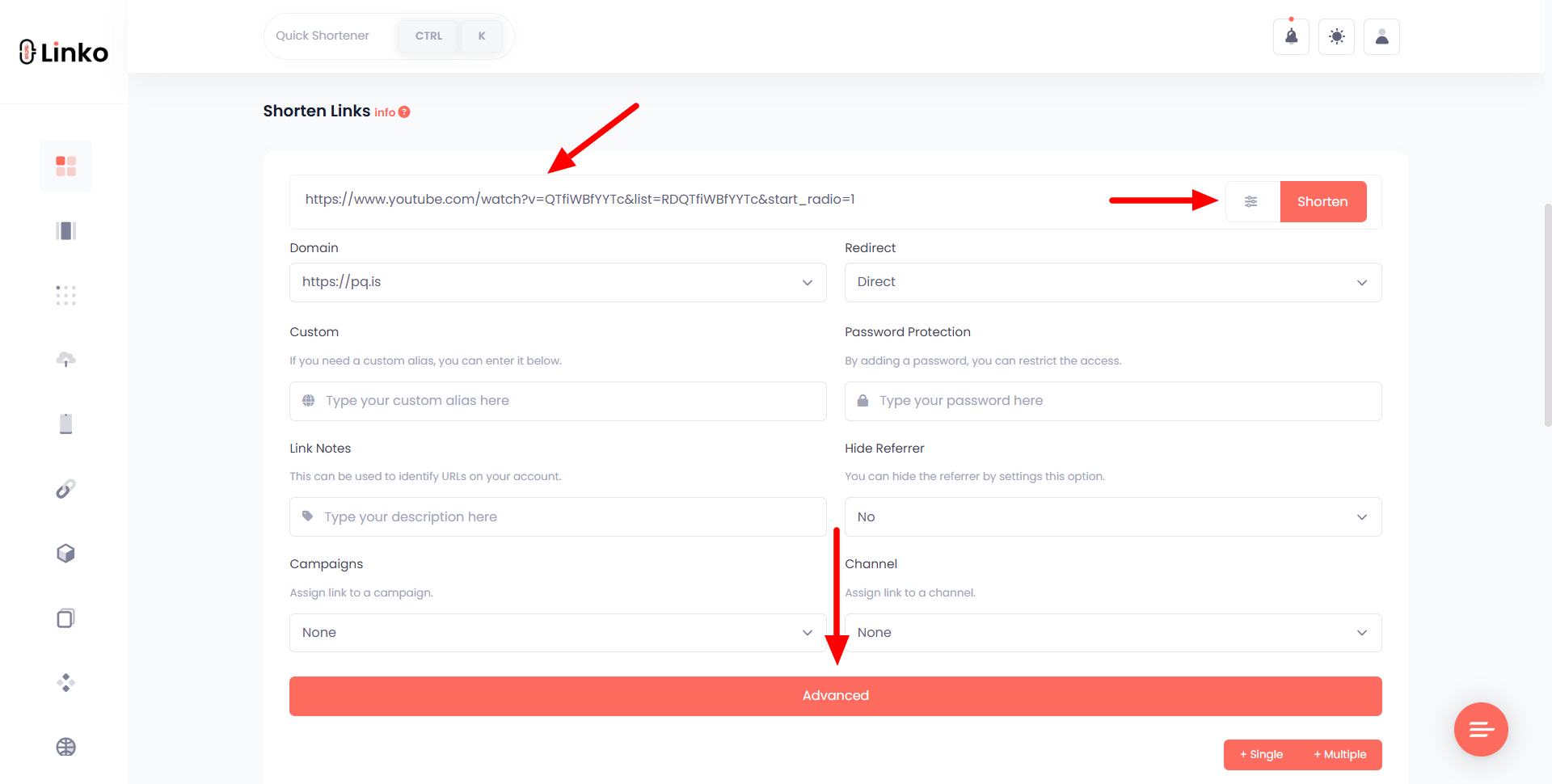
- Navigate to the Deep Linking feature in the drop-down panel.
- Enable deep linking for the selected link.
- Linko will automatically generate app deep links for iOS and Android, including fallbacks for App Store and Google Play.
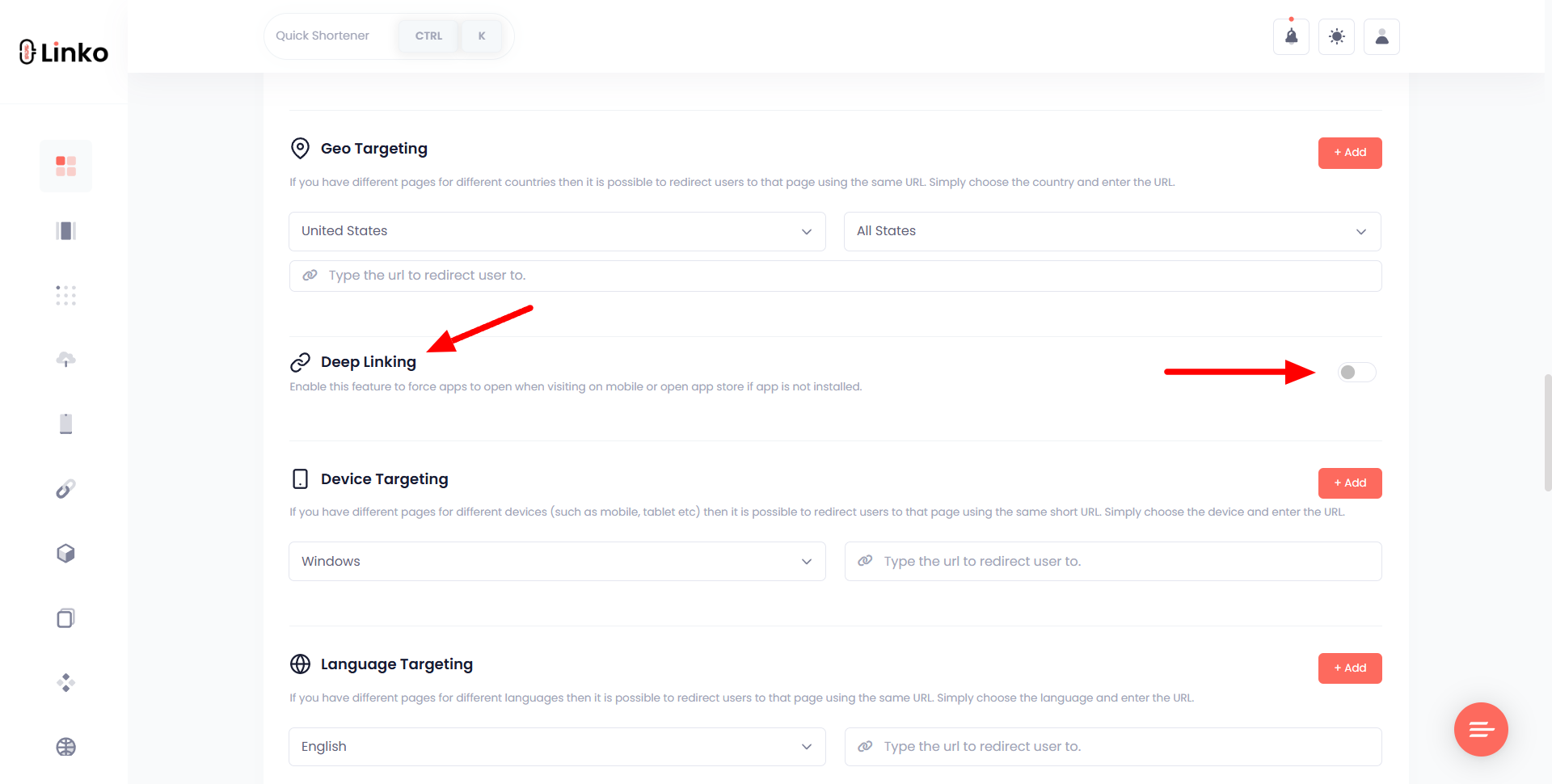
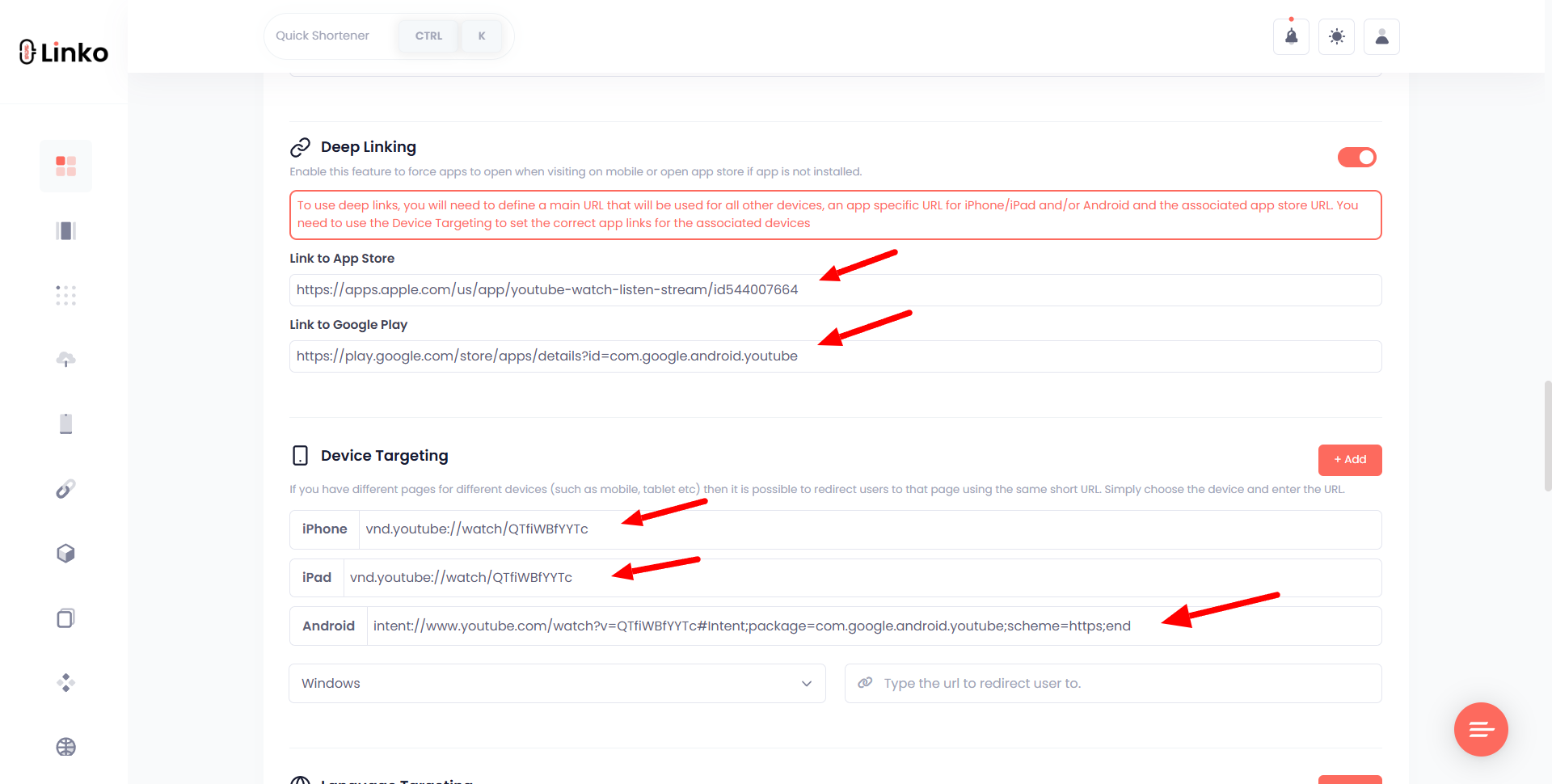
- Scroll back up and click the Shorten button.
- Your shortened deep link is now ready to share across campaigns.
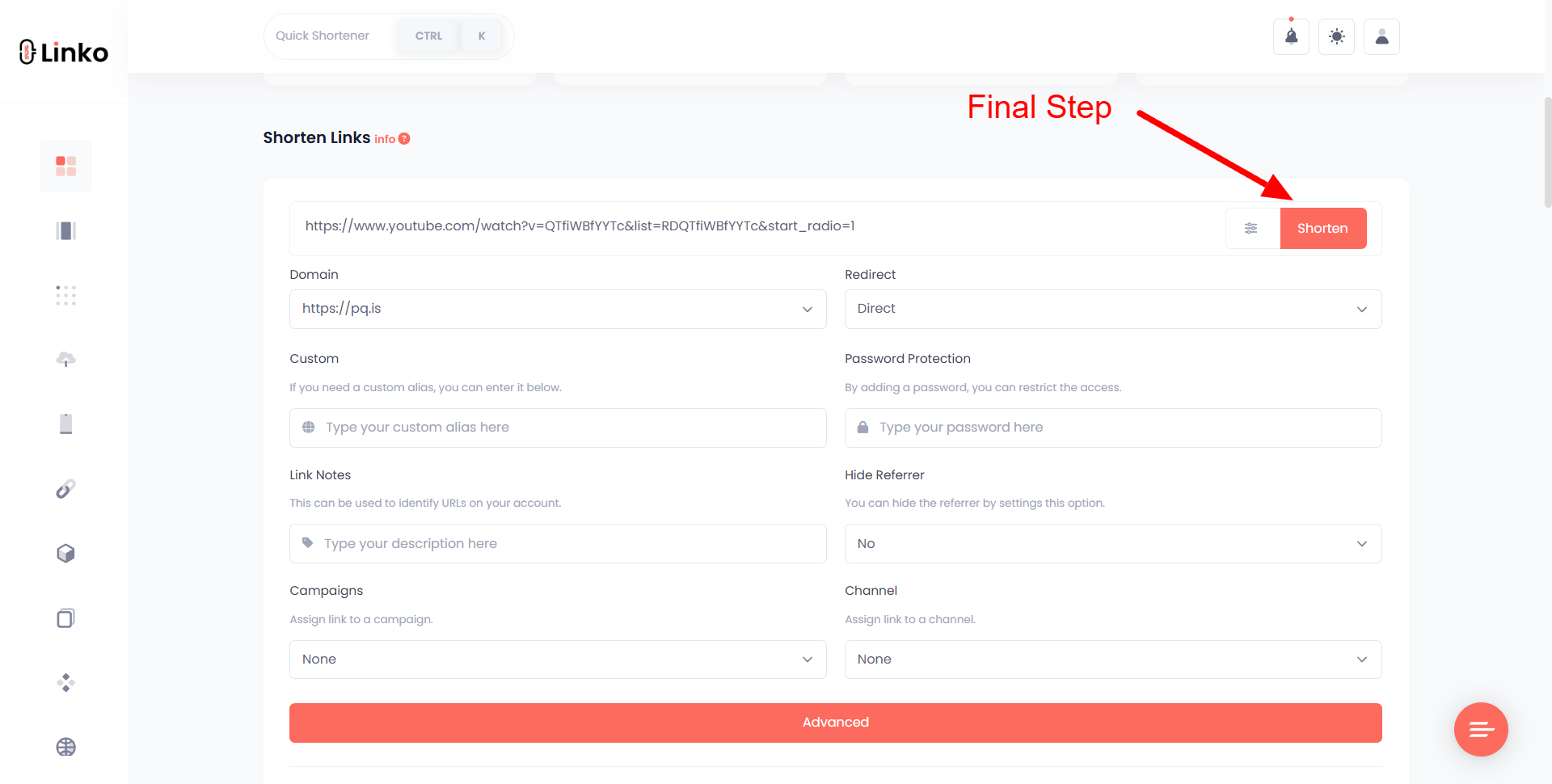
This process takes less than a minute and works even for large campaigns where multiple deep links are needed.
Creating Manual Deep Links for Unsupported Platforms
Some apps and platforms may not be fully supported yet. In such cases, you can still use manual deep link creation.
For example:
- If you run a custom-built e-commerce app, you can add your product-specific deep links manually.
- If a platform isn’t listed, you can enter the correct app schemes (iOS/Android) and market URLs.
This makes Linko future-proof, you don’t have to wait for an official integration to start using deep links.
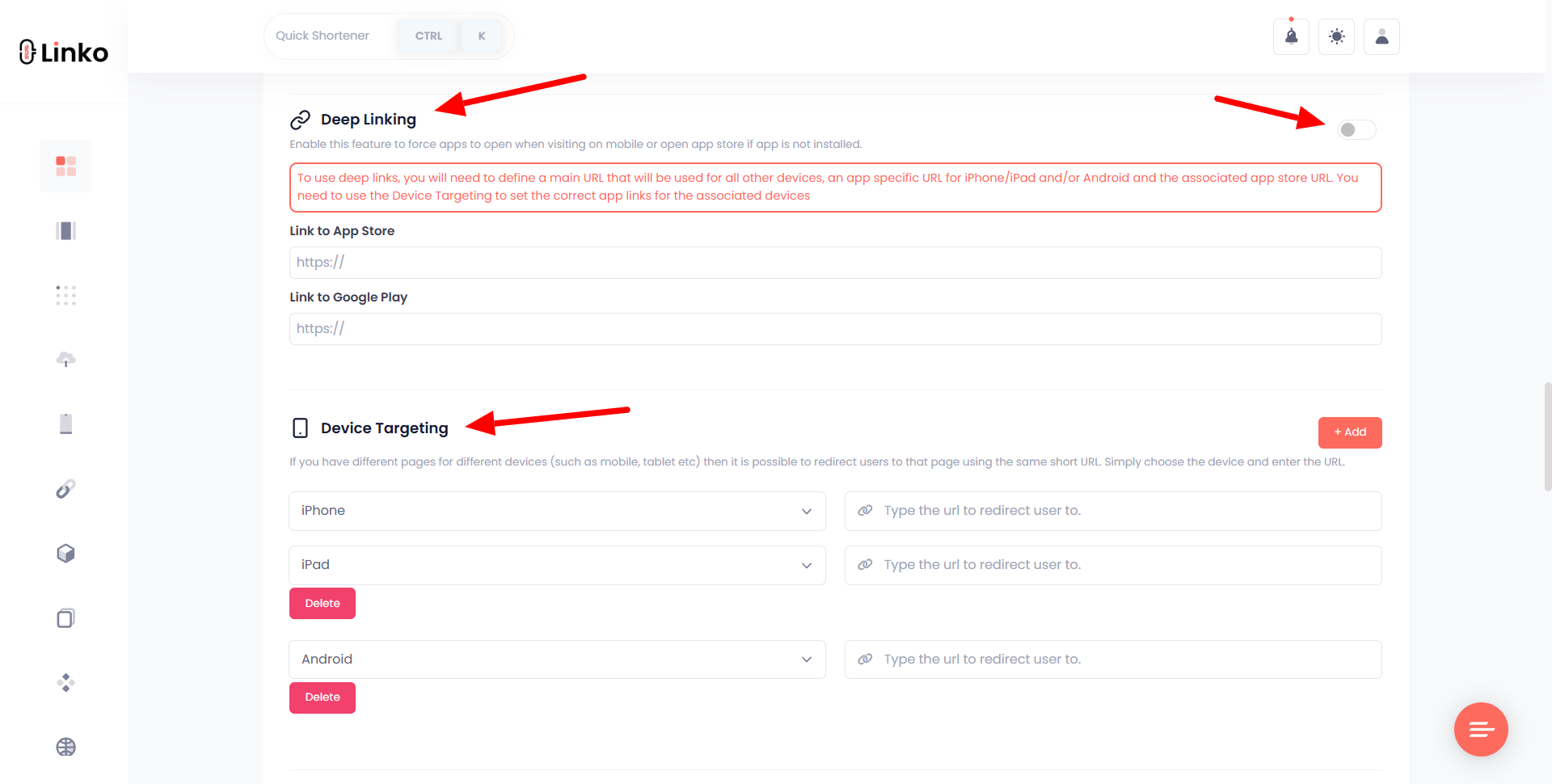
Requesting New Platform Support Through Linko
Another advantage of using Linko is that businesses can request new platform integrations.
If you frequently share links from a platform not yet on the list, Linko’s team can add official support.
This is especially useful for agencies that manage different clients across industries.
Instead of patching together custom solutions, they can request and rely on Linko’s expanding coverage.
Future of Deep Linking Technology
Deep linking isn’t just a feature, it’s shaping the way businesses connect with customers.
The technology continues to evolve, and its future impact will be even bigger.
The Role of Deep Links in Mobile-First Marketing
Mobile-first is no longer optional.
Most traffic now comes from mobile devices, and deep links are the bridge that connects ads, content, and apps without losing users along the way.
Brands that master deep linking will:
- Create smoother mobile campaigns.
- Increase retention through app-first journeys.
- Deliver better results on mobile ads compared to web-only campaigns.
Without deep linking, mobile strategies risk losing attention at the very first click.
How AI and Personalization Will Influence Deep Linking
The next wave of marketing involves personalization powered by AI. Deep linking will play a big role here by delivering dynamic app journeys based on user profiles.
Imagine:
- A fitness app sending different deep links to beginners versus advanced users.
- An e-commerce store promoting personalized recommendations inside the app.
- A streaming service suggesting shows based on past viewing history, with links that open directly into the app’s recommendation page.
By combining AI with deep linking, businesses will create app experiences that feel unique to every user.
Why Businesses Should Adopt Deep Linking Early
Adopting deep linking today puts businesses ahead of the curve. Early adopters see benefits such as:
- Stronger app adoption and user loyalty.
- Higher ROI from ad campaigns.
- Better analytics for future growth.
Those who wait risk losing customers to competitors who offer smoother, faster app journeys.
In short: Deep linking is no longer optional. It’s becoming the standard for digital growth.
Practical Use Cases of Deep Links
Deep linking shines brightest when applied to real-world marketing and customer journeys.
Let’s look at how businesses are already using it to improve results.
Driving Users From Ads Directly Into Apps
One of the most powerful use cases for a deep link is in advertising.
Traditional ads often send people to a homepage, forcing them to search for the product. That extra friction lowers conversions.
With app deep linking, clicks from ads land directly inside the right app screen:
- A Facebook ad for a new game opens the download page or directly launches the app if installed.
- A Google ad for a food delivery offer sends users to the restaurant’s menu inside the app.
Improving Shopping Journeys With Product Deep Links
E-commerce thrives on speed. Customers want to see the product, not browse categories.
Deep links make this possible by guiding users straight into app product pages.
Example flow:
- A user sees an Instagram story with a “Shop Now” button.
- The button uses a deep link that opens directly into the Amazon app’s product page.
- The user adds the item to their cart and checks out instantly.
Here’s a quick comparison:
| Without Deep Link | With Deep Link |
|---|---|
| User clicks ad → Homepage → Search → Product → Add to cart | User clicks ad → Product page inside app → Add to cart |
The difference is clear: fewer steps mean faster purchases.
Boosting Content Views on YouTube, TikTok, and Spotify
Content creators and media companies rely heavily on deep linking to grow engagement.
Instead of sending followers to a homepage, links take them directly to the content.
- YouTube: A creator shares a video link that opens inside the YouTube app, not the browser.
- TikTok: Influencers share campaign links that land users directly on trending videos.
- Spotify: Musicians share album links that open inside the app, encouraging more plays.
This strategy increases retention because users consume content in the environment they prefer the app itself.
Encouraging App Downloads With Deferred Deep Links
Deferred deep links are game changers for app acquisition.
They don’t just send users to the app store; they ensure that once installed, users land in the exact place promised.
Imagine a campaign promoting a new travel feature in an airline app:
- A user clicks the ad but doesn’t have the app.
- They’re sent to the App Store or Google Play.
- After installation, the app opens directly to the new feature page.
This ensures the promise made in the ad is delivered, even if installation was required. It builds trust and eliminates disappointment.
Final Thoughts on Deep Linking
Deep linking is more than a technical add-on. It’s a growth driver.
Businesses using deep links see higher conversion rates, better engagement, and stronger customer loyalty because every click feels purposeful.
Think about the difference between a “maybe they’ll find it” link versus a “this is exactly what you asked for” link.
That’s what deep linking delivers, precision in every customer interaction.
Choosing the Right Deep Linking Tool for Your Business
The benefits of deep linking depend on the tool you use. Not all solutions support automation, deferred links, or custom app integrations.
Here’s why many businesses choose Linko:
- 24 major platforms already supported.
- Automatic deep link generation for iOS and Android.
- Custom configuration for developers.
- Universal and deferred link support for app installs.
- Available in Business ($49/m) and Agency ($149/m) plans, designed for real marketing use cases.
Choosing Linko means you don’t waste time with manual coding or unreliable tools, you get deep linking that simply works.
FAQs
What is deep linking in simple terms?
A deep link is a smart URL that takes users to a specific page or feature inside an app, instead of just opening the homepage.
How does deep linking help businesses?
It reduces the number of steps users take, improves conversions, and provides better analytics for tracking campaigns.
What’s the difference between a universal and a deferred deep link?
A universal link works across devices and opens apps directly if installed. A deferred link ensures that even if the app isn’t installed yet, the user is taken to the correct page after installation.
Does Linko support deep linking for all platforms?
Currently, Linko supports 24 major platforms like YouTube, Amazon, Facebook, Instagram, and Spotify. More platforms are being added regularly, and businesses can also request new integrations.
Is deep linking available on free Linko plans?
No, deep linking is available only on the Business and Agency plans since it requires advanced configuration and analytics support.

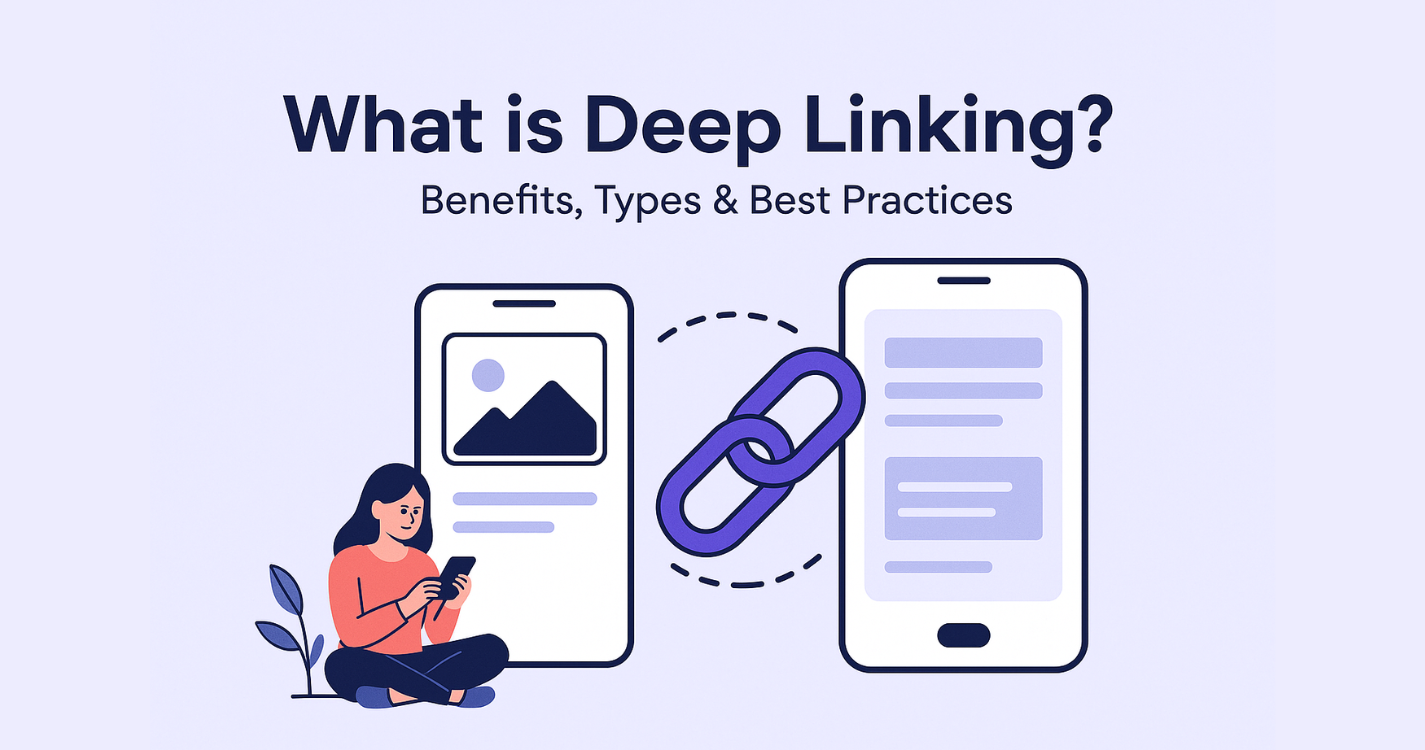
Comments